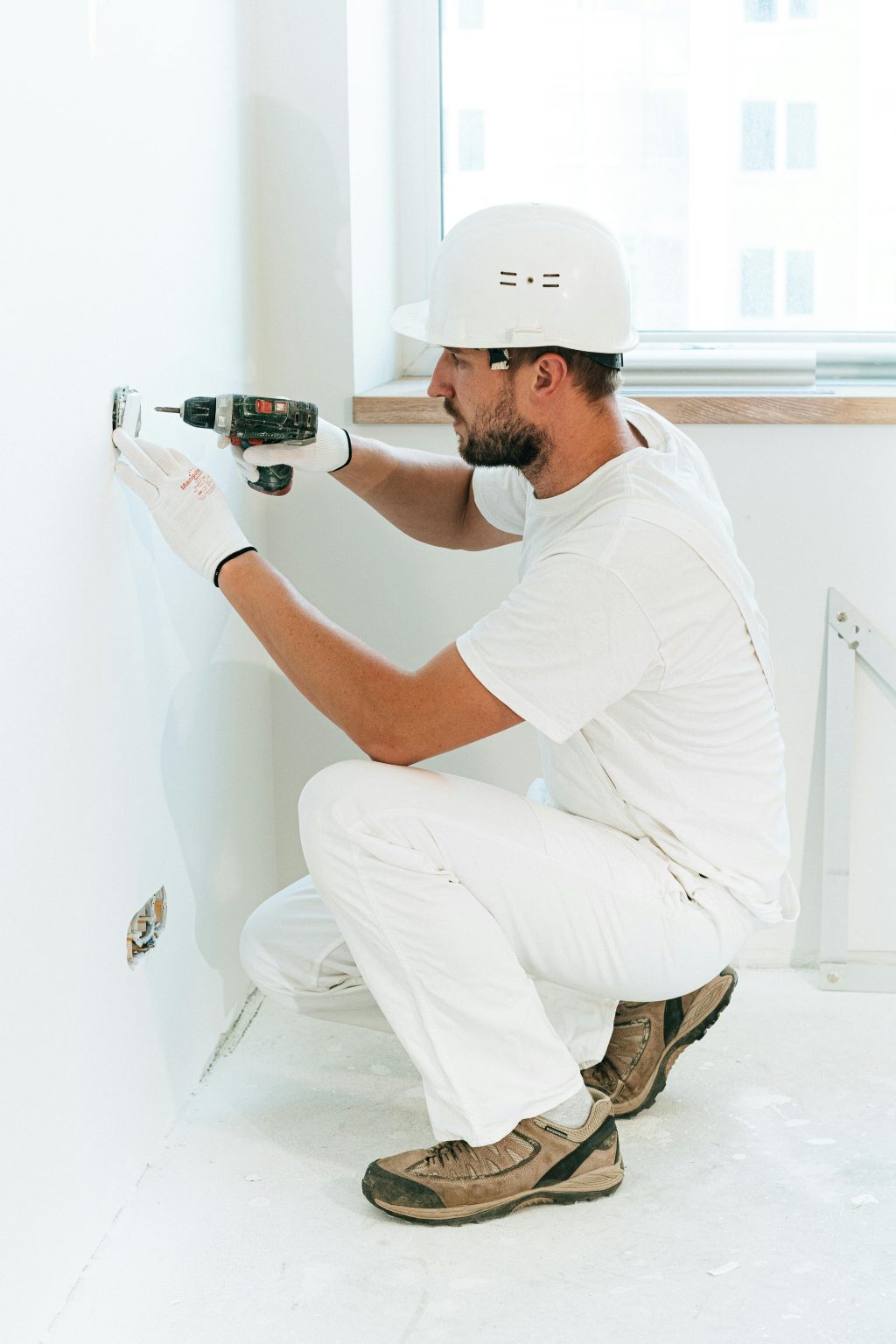Mounting a television might seem straightforward enough, but the horror stories are out there. TVs crashing down in the middle of the night, expensive screens shattering on hardwood floors, or worse — someone getting hurt. The difference between a secure installation & a disaster waiting to happen often comes down to professional expertise. Those who make a living mounting TVs know exactly what can go wrong, which is precisely why their safety procedures are so thorough.
Professional installers don’t just hang your telly on the wall and hope for the best. They follow systematic safety protocols that account for everything from wall composition to seismic activity (yes, even here in the UK). It’s fascinating to watch them work, actually — every measurement double-checked, every bracket tested, every cable secured with purpose.
Understanding Wall Structure and Load-Bearing Capacity
The first thing any competent installer does is interrogate your wall. And I mean properly interrogate it. They’re not just tapping randomly hoping to hear a hollow sound — they use electronic stud finders, measure distances between joists & calculate precisely where the strongest mounting points are located.
Different wall types require completely different approaches. Solid brick walls can handle enormous weights but need specialist masonry bits and rawl plugs. Plasterboard walls over timber frames are trickier — you absolutely must hit the wooden studs, not just rely on plasterboard fixings. Modern steel frame construction presents its own challenges, requiring magnetic stud finders and different screws entirely.
Professional installers carry load calculators and reference charts. They’ll measure your TV’s weight, add a safety margin (usually 150-200% of the actual weight), then determine exactly what fixing method is required. It’s not guesswork — it’s engineering.
I’ve seen DIY attempts where someone’s mounted a 55″ TV using nothing but butterfly wall plugs into plasterboard. Absolute madness. That’s a 25kg television hanging by its fingernails, basically.
The Right Tools Make All the Difference
Walk into a professional installer’s van and you’ll find tools most homeowners have never heard of. Yes, they have the obvious stuff — drills, spirit levels, screwdrivers. But they also carry torque wrenches, pull-test equipment, and specialised mounting hardware for every conceivable wall type.
The torque wrench is particularly important. Over-tighten a screw into masonry and you can crack the wall or strip the fixing. Under-tighten and the whole assembly gradually works loose. Professionals know the exact torque specifications for different screw types and wall materials.
Pull-test equipment lets them verify their work immediately. Once mounted, they can apply controlled force to the bracket & measure exactly how much load it can handle before failure. No guessing involved.
Their spirit levels are usually longer and more accurate than what you’d find in most toolboxes. A TV that’s even slightly wonky becomes incredibly obvious once you’re watching it regularly. Gets under your skin, that does.
Cable Management and Fire Safety
This is where you really see the difference between professional and amateur installations. Professionals don’t just hide cables — they route them safely according to building regulations. Cables running through wall cavities need proper grommets at entry and exit points. They can’t be bundled tightly with mains cables (interference issues). And they certainly can’t be stretched tight or kinked.
Fire safety is a huge consideration that most DIYers never think about. Cables generate heat, especially HDMI cables carrying high-bandwidth signals. Poor cable management can create hot spots inside walls, particularly problematic if the cables are touching insulation material.
Professional installers use fire-rated cable covers and ensure adequate ventilation around connection points. They also check that new cable runs don’t interfere with existing electrical circuits — drilling through a mains cable while running aerial leads is an expensive mistake I’ve heard about more than once.
Seismic Considerations and Movement Allowances
Most people don’t realise that buildings move. Thermal expansion & contraction, settling, even heavy lorries passing outside create tiny movements in wall structures. Professional TV mounting accounts for these forces through proper bracket selection and installation techniques.
Anti-vibration washers, flexible mounting points & properly torqued fixings all help accomodate building movement without compromising the installation. Some brackets include deliberate flexibility — they’re designed to move slightly rather than transfer all forces directly to the wall fixings.
Wind loading is another factor, particularly for installations near large windows or in tall buildings. A large TV effectively acts like a sail, catching air currents and creating additional forces on the mounting system.
Testing Procedures That Actually Matter
Professional installers don’t consider a job finished until they’ve thoroughly tested everything. This goes way beyond just checking if the picture appears on screen.
They test the mechanical integrity of the mount by applying graduated force in different directions. Pull tests, side loading, rotational stress — they’re trying to identify potential failure modes before they become problems.
Signal quality testing ensures all connections are solid and interference-free. Poor connections can cause intermittent faults that drive you absolutely mental — working fine one day, glitchy the next.
The bracket’s adjustment mechanisms get tested too. If your TV mount includes tilt or swivel functions, these need to operate smoothly under load without binding or slipping.
Temperature cycling is sometimes performed on complex installations. Turning the TV on and off several times while monitoring connection temperatures can reveal problems with cable routing or inadequate ventilation.
Documentation and Future-Proofing
Good professional installers document their work properly. Photos of the wall structure before mounting, measurements of fixing positions, cable routes — it all gets recorded. This information becomes invaluable if you ever need to modify the installation or troubleshoot problems.
They also consider future requirements. Will you want to upgrade to a larger TV eventually? Different bracket might be needed. Planning to add a soundbar? Cable routes and power supply locations affect where that can be positioned.
Many professionals provide detailed handover documentation including warranty information for all components used, maintenance recommendations & contact details for future support.
The Real Value of Professional Peace of Mind
Watching a professional work is genuinely reassuring. They check the wall composition, use a spirit level, test the mount’s strength — steps a DIYer might forget or rush through. When we had our family room TV installed, the thoroughness of the professional TV installers was what gave us complete peace of mind, especially with kids around. It’s a level of security you can’t put a price on.
The installer spent nearly an hour just on preparation before touching a single tool. Measuring, checking, calculating. Then another hour on the actual installation. Finally, twenty minutes of testing and adjustment. Compare that to the DIY approach of “measure twice, drill once & hope for the best.”
Professional insurance coverage is another crucial factor. If something goes wrong with a DIY installation, you’re on your own. Professional installers carry public liability insurance specifically covering their work. Damaged walls, broken TVs, even injury claims — all covered.
Final Thoughts
The difference between professional TV mounting & DIY attempts isn’t just about having better tools or more experience (though both help enormously). It’s about systematic approaches, proper testing & understanding all the things that can go wrong.
Professional installers have seen every possible failure mode, from gradual bracket loosening to catastrophic wall failure. Their safety procedures exist because they know exactly what happens when shortcuts are taken.
Your television represents a significant investment — often £500-2000 or more. The wall it’s mounted on is literally holding up your home. Perhaps it makes sense to trust both to someone who does this professionally, rather than treating it as a weekend DIY project?



